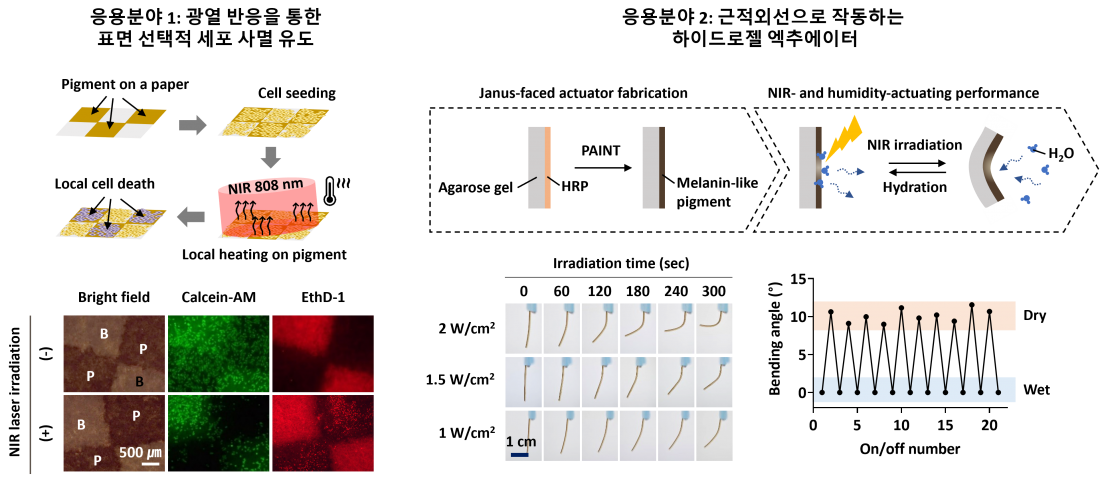□ Daegu Gyeongbuk Institute of Science and Technology (DGIST), led by President Yang Kuk, announced that the research team of Seon-ki Hong, Professor at the Department of Physics and Chemistry of DGIST, has developed the Progressive Assembly on an Initiator-loaded Template (PAINT) technology that can locally fabricate multi-functional organic pigments at desired areas by copying natural melanin formation processes.
□ Melanin, a natural pigment, can adhere to various surfaces, regardless of type, thanks to its high underwater adhesive properties that are attributed to numerous catechol functional groups[1], similar to the adhesive proteins in mussels. New multi-functional organic materials copying these unique properties have been recently developed and widely applied in various fields.
□ However, during the process of creating new elements by integrating new organic materials with various material groups, researchers faced challenges when unintended areas became coated with organic matter due to the adhesive properties that are the unique advantage of these new organic materials. To overcome these challenges, researchers used photolithography[2] to specify the coating location. However, this method has drawbacks, such as the involvement of complex multi-step reactions and the need to use expensive equipment.
□ To solve these issues, Professor Hong’s research team thoroughly investigated the formation processes of natural melanin, and found that the catalytic activity of the protein template significantly affects the process of specifying the pattern formation location. Based on the analytic results, the team conducted an experiment on the synthesis reaction of organic pigments copying the natural melanin formation process. Specifically, organic pigments were produced by initiating the synthesis reaction on the surface that was initially modified to have localized catalytic activity. The research team confirmed that organic pigments had not spread to neighboring regions based on excellent adhesive properties, and that they adhered selectively and voluntarily only to the initiated areas to form patterns.
□ Organic pigment patterns locally formed on the surface exhibited broad optical absorption characteristics in the ultraviolet, visible, and near-infrared spectral regions, similar to natural melanin. Especially, the absorbed near-infrared light was spontaneously converted into thermal energy by the material and generated localized heat. The research team verified that these processes can be applied to induce selective cell death on the surface, or to drive actuators[3].
□ Prof. Hong stated, “The PAINT technology that we developed in this research is a novel technology that can selectively apply materials with universal adhesive properties to only desired areas.” She added, “We anticipate that the PAINT technology will establish the foundation for the development of new melanin-like organic materials applying the characteristics of melanin, such as excellent optical absorption, activity of scavenging reactive oxygen species, and biocompatibility.”
□ This research was conducted with the support of the National Research Foundation of Korea through the Advanced Research Support Program and the Support Program for Creative and Challenging Research (HRHR), the Advanced Research Center (Magnetic Initiative Life Care Research Center) of the NRF, and DGIST’s Sensorium Institute. This research was published in Nature Communications, an international academic journal.
corresponding author E-mail Address : [email protected]
[1] Catechol functional group: It is a structure with two hydroxyl groups (-OH) adjacent to each other at the end of a benzene ring consisting of six carbon atoms, capable of forming covalent bonds with neighboring molecules, hydrogen bonds, and various non-covalent bonds.
[2] Photolithography: It is a patterning technique used in semiconductor processes. It forms patterns of a photosensitive film by exposing light to specific positions through a mask.
[3] Actuator: It is a device that converts the pressure caused by the changing volume of an elastic material to a driving force.



